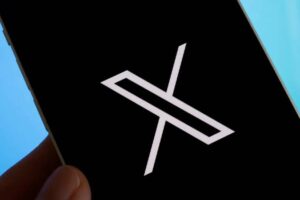A SpaceX launch from Cape Canaveral Space Force Station on Tuesday evening marked the Space Coast’s 57th launch this year, matching the record total seen in 2022.
At 8:36 p.m., a Falcon 9 rocket carrying 22 of SpaceX’s Starlink internet satellites lifted off from Canaveral’s Space Launch Complex 40. Notably, it was the 16th flight for the rocket’s first-stage booster, which successfully landed on the droneship “Just Read the Instructions” in the Atlantic.
Of these launches, SpaceX has been responsible for 53 from either Canaveral or Kennedy Space Center, while United Launch Alliance has had three and Relativity Space one. SpaceX is the sole launch provider this year from KSC, with 11 flights, while ULA, SpaceX, and Relativity have combined for 46 launches from Canaveral.
The majority of SpaceX’s launches have been for its expanding Starlink constellation, making this the 31st Starlink launch from the Space Coast. However, SpaceX has also handled all three U.S.-based crewed missions this year: Crew-6, Axiom 2, and Crew-7, all launched from KSC. KSC has also hosted four Falcon Heavy launches, including last week’s Psyche mission, the first time NASA used this powerful rocket.
The pace of launches has accelerated significantly, with only an 8-hour and 42-minute gap between the Psyche launch last Friday morning and a Starlink launch on the same Friday evening. This is the shortest time between launches since the Gemini program in 1966, which included four double launches from two different pads at what was then Cape Kennedy. These missions sent crew members up in Gemini capsules on Titan rockets, approximately 100 minutes after Atlas boosters had sent Agena Target Vehicles into space, which the Gemini spacecraft would rendezvous with. The record is held by Gemini 11, which launched Pete Conrad and Richard Gordon from Launch Complex 19 only 97 minutes and 25 seconds after the Agena launch from Launch Complex 14, just over a mile to the south.
SpaceX has continually set turnaround records for launches from SLC 40, even launching two missions from the pad in under four days at one point.
With about 11 weeks remaining in the year, the Eastern Range could surpass 70 launches if it maintains its current pace. SpaceX has several more Starlink missions planned, as well as the CRS-29 resupply mission as early as November 1, and potentially the first successful launch of NASA’s Commercial Lunar Payload Services (CLPS) missions on November 14, aiming to send the Intuitive Machines IM-1 lunar lander to the moon.
There could also be one more Falcon Heavy launch before the year ends on the USSF-52 mission for the Space Force.
While Relativity Space completed a single launch of the 3D-printed Terran 1 rocket in March, ULA could potentially fit in one more flight before the end of the year with the inaugural launch of its new Vulcan Centaur rocket. The long-anticipated launch of ULA’s replacement for the Atlas and Delta family of rockets could take place in December, according to ULA President and CEO Tory Bruno, although it had initially been targeting a May launch earlier this year.
Leadership at Space Launch Delta 45 stated at the beginning of the year that the Space Coast might have seen up to 92 launches in 2023, with an expected pace of two launches per week in the coming years as more rocket companies bring their hardware to the launch pads.
SpaceX’s pace is not anticipated to slow down, and ULA aims to increase its Vulcan Centaur flights to at least twice a month. In addition, Blue Origin, led by Jeff Bezos, aspires to send its New Glenn heavy-lift rocket into space for the first time before the end of 2024, although this timeline might be extended to 2025.




